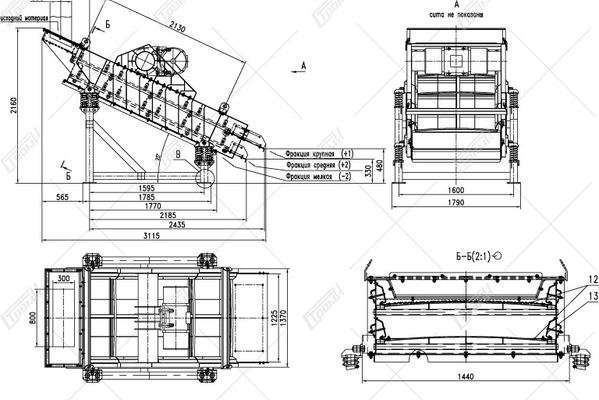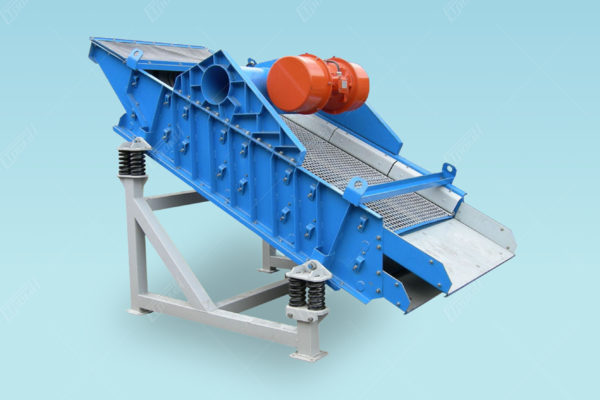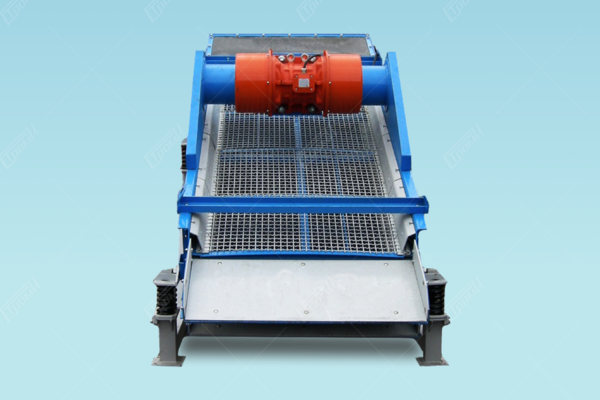Vibrating classifiers
USING
Vibrating classifier А10 is designed for division of granular materials of medium and high abrasive ability with bulk density up to 2000 kg/m3 into three grain-size classes. In glass industry the classifier is more particularly applied for glass cullet classification. Actual capacity depends on the incoming material properties, standard size of grids of the sieving surfaces, adjustment of vibrator eccentric mass position, operating conditions and should be specified when ordering the equipment. Size of the sieving surfaces meshes should be specified when ordering the equipment, the line will be filled when shipping the equipment.
Design and operation principle of the vibrating classifier
Vibrating sorting machine А10 is an inclined sieve screen with continuous elliptical vibrations of working surfaces (sieves). One electromechanical vibrator with eccentric mass, which is fixed on top of the body on the special vibration frame, is used as a vibration exciter. Rotation direction of the vibrator rotor is acceptable in and against the direction of the material travel. Rotation of the rotor in the direction of the material travel secures higher capacity than rotation against the direction of the material travel, however the latest mode secures higher sieving effectiveness.
The sorting machine is manufactured as an open untight version. In case it is necessary to eliminate dust above the upper layer of the sieves it is possible to install an aspiration air exhaust of umbrella type. The charging chute area is equipped with a rubber sheet in which a charging spout is cut in.
The sorting machine includes the following main blocks and parts:
– a body containing a charging chute. The chute is coated with wear-proof panels manufactured by sintering of powder alloys with inclusion of ultra-hard tungsten carbide particles
– a vibration frame with a support plate for vibrator installation
– two layers of sieving surfaces located inside the body on the special frame. Each layer consists of four sieves. Each sieve is equipped with two hook-type grippers for tightening. Tightening of a sieve shall be done in direction which is perpendicular to the material travel by two screw tighteners on the left and right side of the body. After tightening the sieves become bow-shaped
– two output trays which secure descent of the oversize fraction from the upper and lower sieves layers. They are coated with plates of wear-proof metal of high hardness, which is reached by effective tempering on the special lines
– a bottom panel which secure descent of the fraction passed through the grid of the lower sieves layer. It is manufactured of the same material as the coating plates of the output trays and is additionally reinforced by ribs
– a support frame with brackets for damping springs.
technical specifications
| Parameters | Values |
|---|---|
| Estimate of capacity for dry glass cullet based on incoming material, tons/hour, max | 10 |
| Incoming scrap size, mm, max | 60 |
| Humidity of the incoming material, %, max | 0,5 |
| Number of sieving surfaces layers | 2 |
| Number of fractions received | 3 |
| Angle of inclination of the sieving surfaces to the horizontal | 25° |
| Dimensions of the sieving surfaces layers, mm | 1050 х 2400 |
| Permissible size of the sieving surfaces meshes in clear, mm | 2,0…40 |
| Type of vibrating system | rotating with free vibration |
| Amplitude of vibration, mm | 3…12 |
| Vibration frequency, Hz | 16 |
| Type of the electromechanical vibrator applied | MVE 8000/1 «OLI» Wamgroup or VSI 10/8000 S90 «Italvibras», 230/400 V, 50 Hz, 3 phases, 1000 rpm |
| Number of vibrators | 1 |
| Consumed power, kW | 7,1 (7,0) |
| Type of climatic modification as per GOST 15150 | У2 (with placement under a shed or in rooms with ambient temperature from -45° to 40°) |
| Overall dimensions of the sieve on the frame (L х W х H), mm | 3115 х 1790 х 2160 |
| Mass of the classifier, kg | 1740 |
| Mass of the positioning frame, kg | 160 |
| Dynamic factor | 5 |



